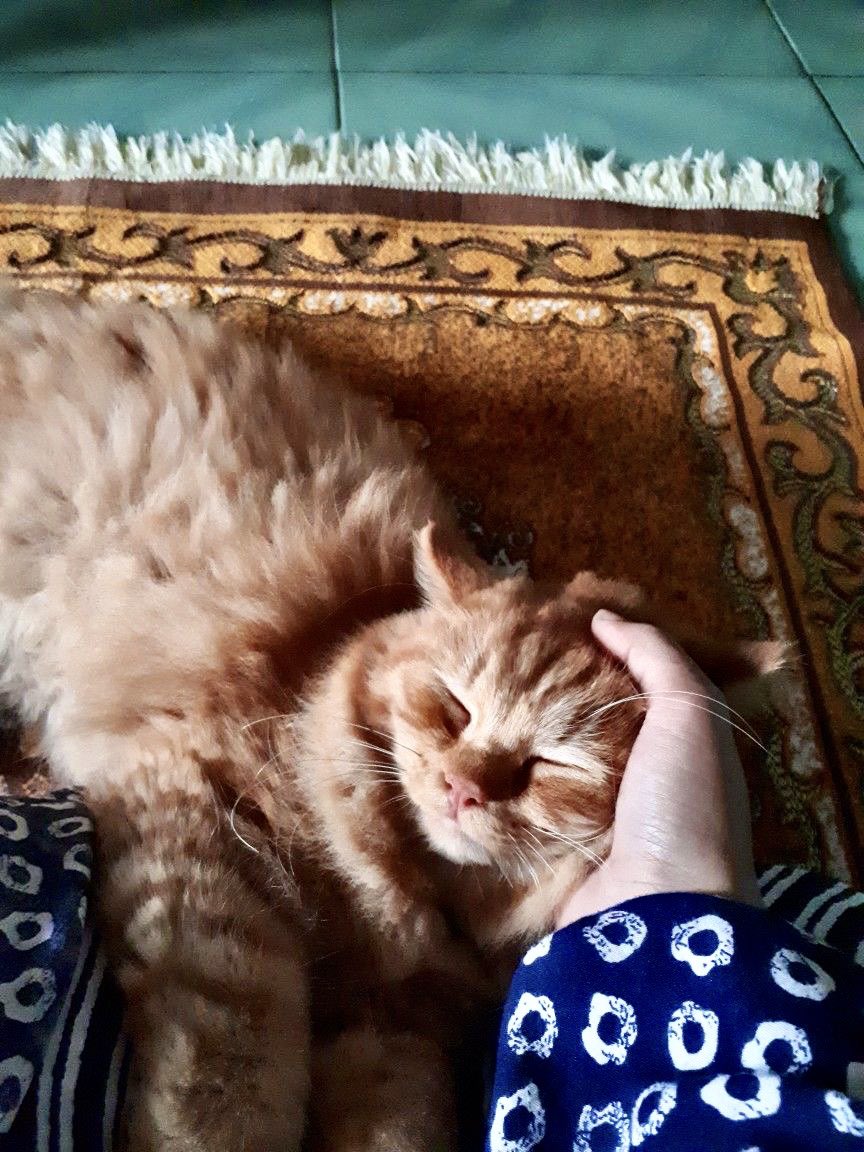Cats are revered animals in Islam & considered the quintessential pet. Admired for their cleanliness, they're allowed to enter homes & mosques
It’s #InternationalCatDay & to celebrate, here is why cats are important in Muslim culture, with cats mosques & prayer mats
A thread…
It’s #InternationalCatDay & to celebrate, here is why cats are important in Muslim culture, with cats mosques & prayer mats
A thread…

1/ In Islam, cats are taught to be well-cared-for, treasured, appreciated and loved.
Cat on prayer mat #InternationalCatDay
Cat on prayer mat #InternationalCatDay

3/ Some Muslims believe that having a pet cat brings angels into your home
Cats on prayer mat #InternationalCatDay
Cats on prayer mat #InternationalCatDay

5/ In Islam cats are thought to be ritually clean. According to authentic narrations, one may make ablution for prayer with the same water that a cat has drunk from. It’s even permissible to eat from the same bowl that a cat has eaten from
Cat on prayer mat #InternationalCatDay
Cat on prayer mat #InternationalCatDay

7/ Cats have been revered for centuries in Muslim culture. So much so, that one of Prophet Muhammad’s (PBUH) companions was known as Abu Hurairah (Father of the Kittens) for his attachment to cats
Kittens on prayer mat #InternationalCatDay
Kittens on prayer mat #InternationalCatDay

8/ Gli, the famous cat of Hagia Sophia Mosque who sadly passed away. Gli means "union of love" in Turkish #InternationalCatDay 

9/ Prophet Muhammed (PBUH) himself was a great cat-lover. Many Muslims believe that Muezza (or Muʿizza; Arabic: معزة) was his favorite cat. However, there is no mention of this particular cat in the hadith
Cat on prayer mat #InternationalCatDay
Cat on prayer mat #InternationalCatDay

11/ Aside from cats protecting homes & food stores from pests, cats were valued by the paper-based Islamic cultures for preying on mice that destroyed books. For that reason, cats are often depicted in paintings alongside Islamic scholars & bibliophiles #InternationalCatDay 

13/ A cat rests in Saudi Arabia’s Masjid al-Haram in Mecca, just a few hundred feet from the Kabah, the most sacred site in Islam. The fact that cats are allowed in such close proximity to the site reflects the Prophet Muhammad’s (PBUH) devotion to felines #InternationalCatDay 

15/ İsmail Saib Sencer (1873-1940), the director of the Bayezid Library in Istanbul, for example, fed hundreds of cats. For this reason, Bayezid Library was called “The Cat Library
A cat sleeping at Hagia Sophia Mosque #InternationalCatDay
A cat sleeping at Hagia Sophia Mosque #InternationalCatDay

17/ Caring for cats is important. Prophet Muhammed (ﷺ) said, A woman entered the Hell because of a cat which she had tied, neither giving it food nor setting it free to eat from the vermin of the earth. (Sahih al-Bukhari 3318)
Cat on prayer mat #InternationalCatDay
Cat on prayer mat #InternationalCatDay

19/ The nickname of Pir Asad, one of Rumi's caliphs, renowned for his love of cats, was nicknamed "Pisili Sultan" (Sultan with Kitties)
Cats on prayer mat #InternationalCatDay
Cats on prayer mat #InternationalCatDay

21/ A selfie of Gli, the famous cat of Hagia Sophia Mosque. Gli was a beloved and world-famous Turkish shorthair cat who resided at the Hagia Sophia in Istanbul & sadly died on 7 November 2020, aged 16 #InternationalCatDay 

22/ There is a mosque in Damascus called Masjid al-Qitat. Qitat means cats in Arabic. In 1267, it was donated under Islamic law as a charitable foundation established to protect cats. This endowment set up 800 years ago is still thriving
Cat on prayer mat #InternationalCatDay
Cat on prayer mat #InternationalCatDay

23/ Imam Hüseyin Koçak, from the mosque in Kırklareli province’s Ahmetçe village, Turkey is renowned for the care and shelter he provides to cats in the mosque, especially during harsh winters #InternationalCatDay 

Cats are important in Islam & Muslim Culture.
Discover why with cats, mosques & prayer mats:
baytalfann.com/post/cats-in-i…
#InternationalCatDay
Discover why with cats, mosques & prayer mats:
baytalfann.com/post/cats-in-i…
#InternationalCatDay
• • •
Missing some Tweet in this thread? You can try to
force a refresh
































